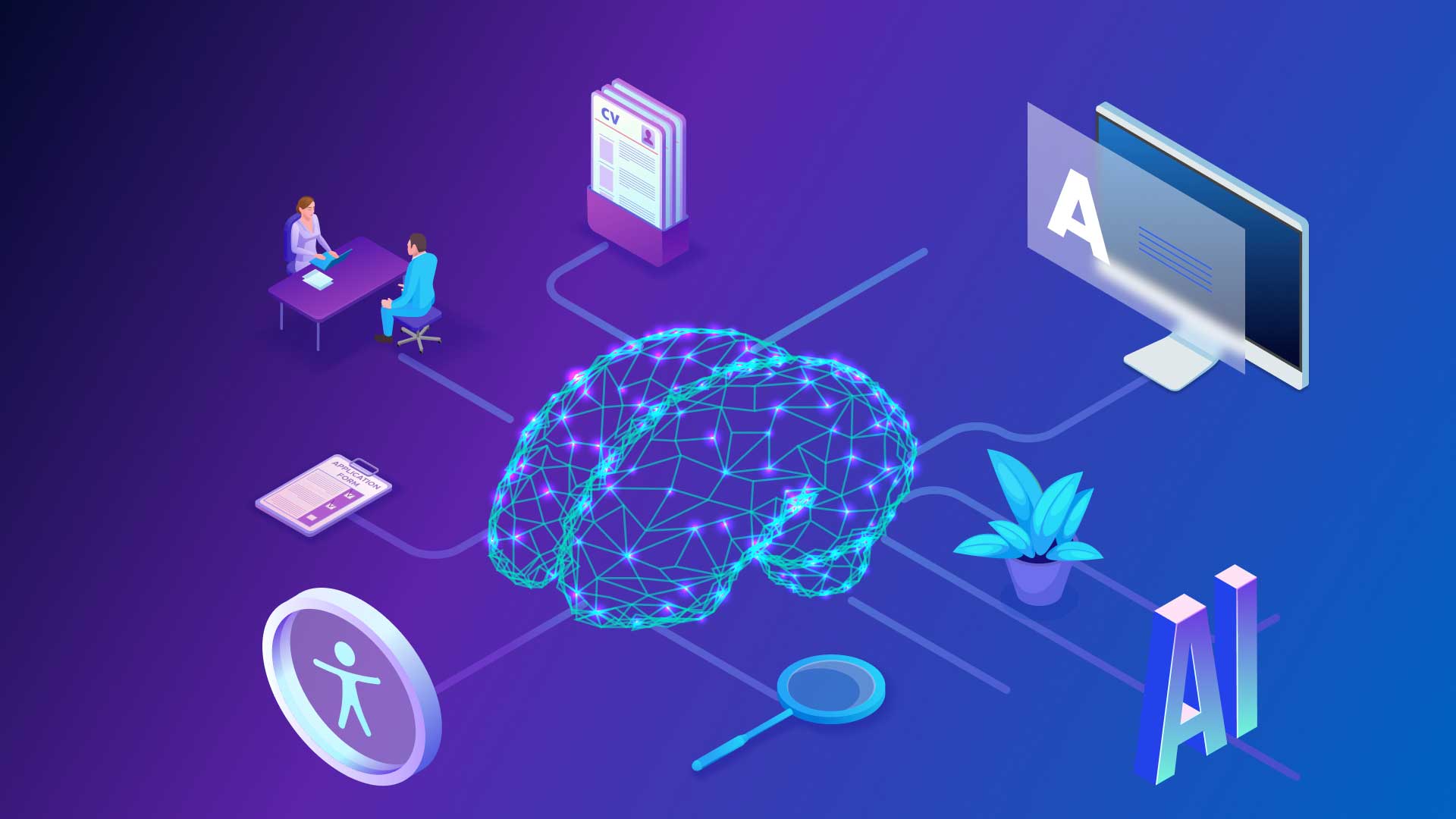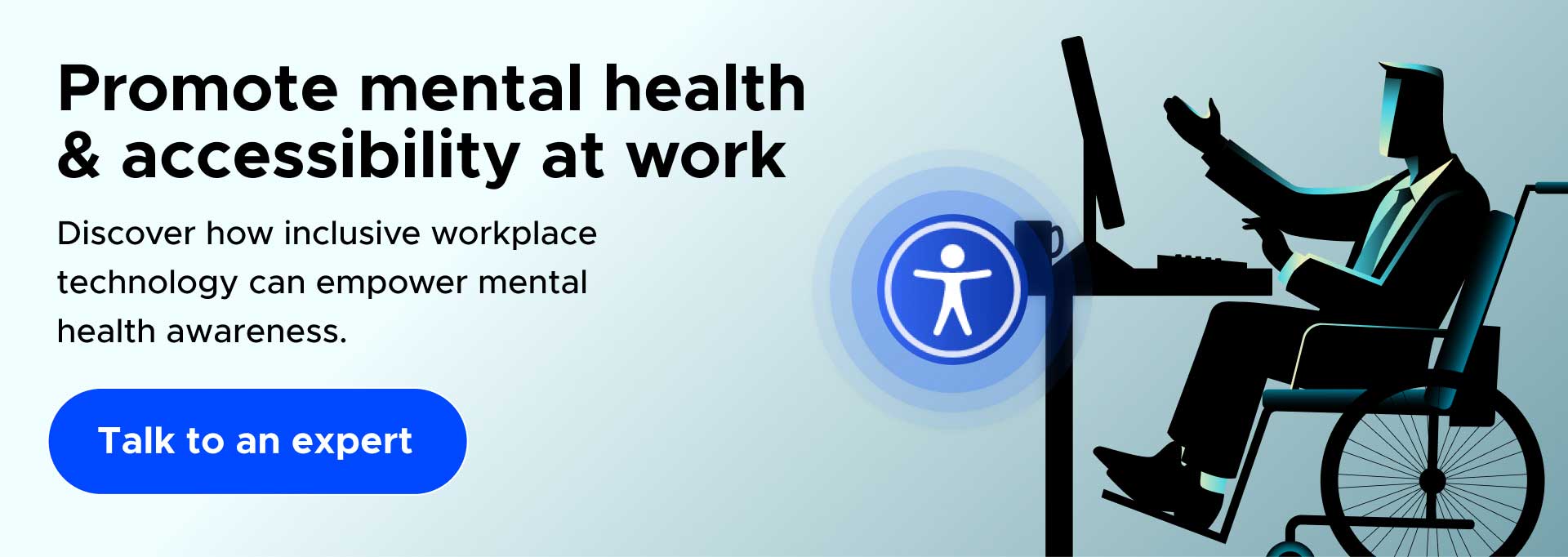Mental Health Awareness Month: Powering Accessibility in Workplace Tech

Mental Health Awareness Month (May) plays a vital role in increasing public understanding of mental health issues. Some countries have a dedicated Mental Health Awareness Week or Day, however, prioritizing mental health initiatives should be incorporated into company strategies throughout the year, rather than confining them to a single month.
Mental Health Awareness Month presents a significant opportunity to implement initiatives that increase advocacy, encourage community support and combat societal stigma.
This stigma is particularly experienced in the workplace with a study conducted by People Management finding that two in five (43 per cent) employees with mental health issues and other less visible disabilities haven’t disclosed it to their employer.
The Centers for Disease Control and Prevention also indicates that adults with disabilities experience higher levels of mental distress than those without disabilities. Mental illness is one of the most significant causes of worker disability. This issue has only intensified since the pandemic with the dramatic rise in digital platforms which put digital accessibility under increased scrutiny.
Let’s take a closer look at the often overlooked connection between mental health, disability and digital accessibility.
Building a Culture of Digital Mental Health Accessibility
The COVID-19 pandemic promoted a massive shift to digital platforms and services. New digital solutions were created to help employers provide personalized support to employees, making well-being a strategic focus for organizations.
Many employers have started to offer mental health apps as a part of their employee wellness programs. These apps can range from meditation and mindfulness apps to more comprehensive mental health resources that include therapy and counseling services. In some cases, these apps are integrated into an organization’s intranet or employee portal.
Estimates suggest that over 10,000 mental health apps are now available to the public, but not everyone is experiencing equal access to the digital world.
The W3C Web Accessibility Initiative summarizes that many websites and digital tools have been developed with barriers to accessibility, creating difficulties or preventing some individuals from being able to use them.
Digital technology can make a significant positive impact towards supporting employees’ mental health, but if these digital tools are inaccessible, what proactive steps can employers make to tackle this issue?
A Missed Opportunity: Addressing Mental Health and Digital Accessibility
There has been little research conducted to understand the accessibility of digital mental health, especially for those with disabilities.
If HR leaders do not build their intranets and digital health and wellbeing tools with accessibility built into the design, the technology will be unusable for many employees.
How can HR leaders bridge the gap between those who can easily access mental health services and those who cannot through their company’s intranet?
Let’s explore some effective approaches to improve digital access for mental health support:
5 Steps Towards Accessibility in the Workplace
In recognition of Mental Health Awareness Month, we’ll share five actionable steps that employers can take to support employees with mental health issues by adding accessibility into workplace technologies:
- Connect with your Dev Team. Collaborate with your IT and web development teams to ensure that digital platforms and resources are accessible to everyone, including people with disabilities. Build your websites and other digital tools with accessibility in mind, ensuring they meet accessibility standards and legal requirements.
- How accessible is your intranet? Intranets often contain critical information and tasks necessary for daily work, and failure to make them accessible can be a form of discrimination that prevents users from completing their job responsibilities. HR departments should make their intranet accessible because it’s a fundamental right for all employees to be able to access information and perform work duties, regardless of their abilities.
- Meet Web Accessibility Standards. One of the most important tools for HR leaders to meet accessibility standards is the Web Content Accessibility Guidelines (WCAG). WCAG is considered the legal foundation for web accessibility worldwide, providing a set of recommendations for making web content more accessible to people with disabilities, including those with visual, auditory, physical, and cognitive impairments. By complying with the WCAG standards and the Americans with Disabilities Act (ADA), companies can ensure their HR tech is accessible to all employees, regardless of their disabilities.
- Are your documents accessible? Your organization’s employee handbook, for example, is one of the most important documents that HR produces. Outlining information on everything from your company’s mission statement, values, health and safety policies and employee expectations, these policies and procedures should be provided in accessible document formats, providing accommodations, such as assistive technology features, so people with disabilities can access your content with ease. Find out how to create accessible Microsoft Word and PDF documents that conform to the Revised 508 Standards or get in touch with UserWay’s accessibility experts to help.
- Give your digital assets a Health check. If you’re unsure if your intranet and other digital tools are accessible, Conduct an Accessibility Audit of your workplace, technology, and policies to identify areas for improvement. This is a surefire way to highlight any barriers to accessibility, giving you an actionable list of every violation on your intranet and remediation instructions.
Employers have a multitude of options to further integrate accessibility into mental health apps through their intranets. By placing a priority on accessibility, HR leaders can provide valuable support to employees with disabilities while also ensuring compliance with global accessibility standards.
UserWay For AI-Powered Workplace Accessibility
UserWay is on a mission to spread awareness on how to make the digital world accessible to people of all abilities. Request a demo today and learn how UserWay’s full suite of AI-powered accessibility solutions can help to address digital accessibility in the workplace so employees can easily access the mental health services available to them.
FAQS
Is my company intranet accessible?
To ensure digital accessibility and legal protection, companies should follow the ADA and WCAG guidelines for their company intranet.
How can I add accessibility into my company intranet?
Consider conducting an accessibility audit and involving employees with disabilities in your intranet design process. Working with accessibility experts can be valuable to identify accessibility barriers to your intranet and implementing solutions to ensure accessibility for all users.
What should my digital accessibility priorities be?
Web accessibility priorities will include making your web content perceivable, operable, understandable, and robust for all users, including those with disabilities. UserWay’s accessibility experts can help you achieve this by adhering to guidelines such as the Web Content Accessibility Guidelines (WCAG).





Share